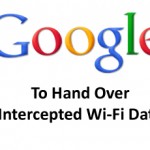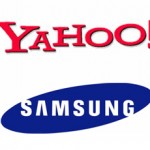 Mountain View, California — Apple gets all the press when it comes to mobile ads, but Google is poised to be the 800-lb. gorilla of the market. Barely six months after finalizing its $750 million acquisition of mobile advertising network AdMob, search engine Goliath Google took another step toward knitting together the largest mobile ad network today by integrating its enormous pool of Google AdSense ads with the AdMob mobile network.
Mountain View, California — Apple gets all the press when it comes to mobile ads, but Google is poised to be the 800-lb. gorilla of the market. Barely six months after finalizing its $750 million acquisition of mobile advertising network AdMob, search engine Goliath Google took another step toward knitting together the largest mobile ad network today by integrating its enormous pool of Google AdSense ads with the AdMob mobile network.
The latest consolidation means that — during the next few weeks, Jason Spero, director of mobile for the Americas at Google, mentioned that the 20,000 iPhone and Android application developers in the AdMob network will begin to have access to Google AdSense ads when an AdMob ad is not available. “Publishers will reap profit from the increased ad pool, and will make more money,” he said.

“For the advertisers it is extending the reach without having to do anything incremental. We are making this completely seamless and easy for the advertisers.” “This will also enable Google advertisers to extend the reach of their mobile campaigns to the thousands mobile apps in AdMob’s network, such as Rovio’s Angry Birds,” writes Google Mobile Ads product manager Jason Morse on the Google Mobile Ads Blog.
In a blog post, the companies say they did a lot of heavy lifting to make this process as simple as possible. According to Google, publishers using a recent version of the AdMob SDK are not required to update their existing code–reporting will blended directly into their AdMob accounts, with a single check arriving each month. They will also have the option of opting out of Google’s ads if for some reason they do not wish to join. Spero said that some days AdMob is able to fill a publisher’s inventory by 100 percent, but this will help on days where fewer ads are available.
Google further states that publishers will not be able to screen the types of AdSense promotions that run in their apps, meaning partners who have selected ad filters for their AdMob inventory must opt in to receive Google ads via the App Settings tab in the Sites & Apps section of their publisher account.
Additionally, not all of the capabilities will be culled over from Google’s AdSense to AdMob. For example, Spero said AdMob already had expandable ads, so those would not be moving across, but they are adding new things, such as Click to Call and and location-based targeting. Today, there is already some publishers using both networks, but Spero says the overlap will be limited to a very small percentage.
Google bought AdMob a year ago, but it could only start integrating it once the deal closed at the end of May. By the end of next year, Google hopes to have a single mobile network, according to Spero.
“The belief is the access point may be a phone, it may be a tablet, it may be desktop,” he said. “That is the long-term vision. It does not happen overnight.” As for other integration efforts, Spero says this is a first step in the roadmap that goes well into 2011. On the organizational side of things, the former AdMob sales staff is acting as Google’s mobile display specialist team, and Google’s mobile search specialist team continues to function as it always has.
However, the AdMob/AdSense consolidation comes days after AdMob founder and CEO Omar Hamoui exited Google, citing personal reasons. Hamoui spent only about five months working at Google–the Federal Trade Commission did not approve the AdMob acquisition until May, after a lengthy investigation determined the deal did not pose a threat to competition in the mobile ad market. Google now represents 21 percent of the U.S. mobile advertising market according to data published in September by research firm IDC, running neck and neck with rival Apple’s iAd.
For more on the AdMob/AdSense integration:- read this Google Mobile Ads Blog entry.


